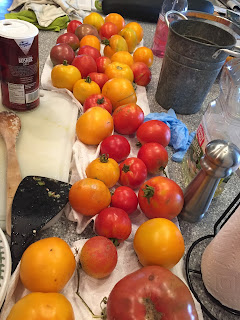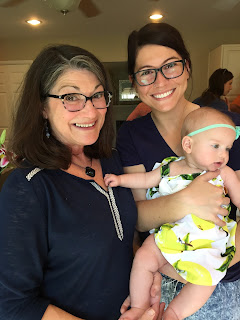Parable
There once was a Gentleman Farmer who watched over a flock of
hens. On most mornings, he enjoyed a couple of deliciously fresh eggs from his
flock. The GF believed that allowing the
flock to roam free around the property was good for the health of the flock and
probably added to the richness of the taste of the eggs. But, alas, there was a problem. A fox had
been sighted near the farm, and personal experience had taught him that within
a very brief period of time, a fox could devastate the flock. Yet in a six-year
period of time, during which the flock had been allowed to roam free only 40%
of the time, a fox had plundered the flock only one time. Could the farmer take that risk with his
precious flock?
Science and COVID-19
Science is defined as, “the
intellectual and practical activity encompassing the systematic study of the
structure and behavior of the physical and natural world through observation
and experiment.”
COVID-19
is a disease caused by a specific
coronavirus labeled SARS-CoV-2.
According to the
U.S. Centers for Disease Control and Prevention (CDC),
there are actually multiple types of coronaviruses, some of which commonly
cause mild upper-respiratory tract illnesses. There are seven types of
coronavirus that infect humans, three of which evolved from animal
strains.
Because there are many coronavirus types,
referring to it simply as "coronavirus" is very general. The CDC and
World Health Organization (WHO) encourage experts to use COVID-19 when
referring to this new disease, a
novel (or new) coronavirus that has not previously been seen in humans. In
COVID-19, ‘CO’ stands for ‘corona,’ ‘VI’ for ‘virus,’ ‘D’ for disease and 19
indicates the year it was discovered.
Just as the general public has become
familiar with this terminology, officials have also begun using SARS-CoV-2 in
connection with the recent outbreak. Severe acute respiratory syndrome
coronavirus 2, shortened to SARS-CoV-2, is actually the virus that causes COVID-19 (the disease). As the name indicates, this virus is genetically related
to the SARS-associated coronavirus (SARS-CoV) that caused an outbreak of severe
acute respiratory syndrome (SARS) in 2002-2003, however it is not the same
virus.
Scientists
believe that SARS-CoV-2 originated in horseshoe bats. Although humans could have caught the deadly
virus directly from bats, there is strong evidence that suggests that pangolins
may have been an intermediate host. A
pangolin looks like a reptile, but is actually a mammal. They are one
of the most trafficked mammals in Asia and, increasingly, Africa. Pangolins are
in high demand in countries like China and Vietnam. Their meat is considered a
delicacy and pangolin scales are used in traditional medicine and folk
remedies. All eight pangolin species are protected under national and
international laws. But there is still growing international illegal trade in pangolins. It is estimated that the industry that sells
exotic wildlife in burgeoning wildlife markets is worth $76 billion dollars.
Statistics
As
of 6/11/20, there have been more than 2 million confirmed cases of COVID-19 in
the US and 112,000 confirmed deaths. When trying to assess risk of death, one
must first do the math: 112,000 divided by 2,000,000 = 5.6%. The first death from COVID-19 in the US
happened in early February, 2020.
Let’s
try to place this number in a broader context by looking at other annual mortality numbers in the US.
Coronary
heart disease 375,000
Lung
diseases 296,000
Brain
diseases (stroke and Alsheimer’s) 214,000
Digestive
cancers 106,000
Infections
(respiratory and blood) 95,000
Suicide 41,000
Automobile
accidents in 2018 36,560
(the
above data came from How Not To Die,
by Michael Greger and Gene Stone, pg. 10 and 11)
The Unknown
How
does a person in a vulnerable age group remain disease free? We know that the disease is highly
contagious; therefore, keeping a safe distance from an infected person seems
paramount. If a person feels sick, they should STAY HOME, but a semi-controlled
study out of Iceland shows that around 50% of those who tested positive were
determined to be asymptomatic for COVID-19 and thus have played an important
role in spreading the disease. Those
individuals would not have stayed home because they never knew they were
contagious.
RISK
Determining
a statistical equation that provides us a roadmap for staying free from
COVID-19 is a near impossibility, therefore, we must assume that every person
with whom we come into close contact is infected with the disease. We must pin our hopes on two important
factors: 1) that a vaccine is found sooner than later; and 2) if we are
infected, the disease will not specifically be lethal to us.
Double,
double toil and trouble,
Should we
live life in a bubble?
Life is precious, and for me the answer to that
question, for now, is YES.
This farmer will work to keep the fox from the hen house!
CPW





























